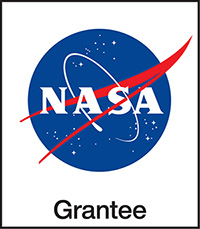2. Close to Home: Water Where We Are From
Learners consider who uses water in their community and how, and they make water samples.
Setup: Prep Time 15 min.
- Set up Materials Table.
- Print handouts.
*See Materials & Preparation in the Educator Guide linked above for full info.
Context-Setting Video
Recycling Water on Space Station
21st Century Skills
- Critical Thinking
Habits of Mind
- Consider problems in context.
Learners Will Do
- Identify multiple groups that use water and the kind of water each needs.
Learners Will Know
- Different types of water can be used in different ways.
Connecting Across Activities
- Activity 1: Sharing Experiences: Last time, learners shared experiences with and stories about water.
- Activity 2: Water Where We Are From: Today, learners consider who uses water in their community and how, and they make water samples.
- Activity 3: Investigating Water Quality: Next time, learners will measure the water quality of the samples they have made.
Related Video
Water Reuse in Extreme Environments: Human Technology

